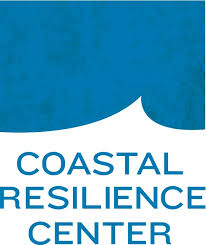 For me, the week after the annual AMS meeting each year is usually a week of catch-up in my home DC-based office. But this year finds me instead in Chapel Hill, North Carolina. I’m sitting in as a member of the advisory board for the Department of Homeland Security’s Coastal Resilience Center of Excellence at the University of North Carolina. A brief squib from their website gives the background:
For me, the week after the annual AMS meeting each year is usually a week of catch-up in my home DC-based office. But this year finds me instead in Chapel Hill, North Carolina. I’m sitting in as a member of the advisory board for the Department of Homeland Security’s Coastal Resilience Center of Excellence at the University of North Carolina. A brief squib from their website gives the background:
The University of North Carolina at Chapel Hill leads the Coastal Resilience Center of Excellence (CRC), made possible through a five-year, $20 million grant from the Department of Homeland Security (DHS) Science and Technology Directorate, Office of University Programs. The CRC is a consortium of universities, private companies, and government agencies focused on applied research, education and outreach addressing threats to coastal communities due to natural hazards and climate change.
The CRC expands on work conducted through the DHS Coastal Hazards Center of Excellence, which was co-led by UNC-Chapel Hill and Jackson State University from 2008 to 2015…
…The CRC’s leadership team is comprised of Dr. Rick Luettich, Lead Principal Investigator; Dr. Gavin Smith, Director; Dr. Robert Whalin, Education and Workforce Director (Jackson State University); Dr. Tom Richardson, Associate Director (Jackson State University); and Anna Schwab, Program Manager.
One hundred people are crammed into the meeting room, which crackles with positive energy, laced with a bit of constructive tension. There are the academics doing the research and teaching, coming from more than twenty universities stretching from Oregon to Rhode Island, from Florida to Texas, and points in between. DHS has a small crowd of representatives here; others are listening in/participating by phone/webinar. Partner agencies – NOAA, USACE, Coast Guard, and others are all here. The progress made since the last meeting has been extraordinary, on topics ranging from adaptive-grid, numerical modeling of storm surge and merging of hydrologic and ocean models to get at inundation, to engineering, risk communication, community planning, and STEM education. Projects that had seemed silo-ed and disjointed a year or so ago are better integrated.
But the pressure is on. DHS is focused, looking forward to a biennial review of the Center to take place soon. This meeting is something of a dry run. At the biennial review, they’ll be requiring concrete evidence of high-quality, peer-reviewed research; concrete contribution to impact-based decision support for specific, identified end users; quantitative measures of progress and value; not just numbers of STEM participants but individual narratives of the minority- and other students who’ve participated in the STEM education and how their career trajectories have been changed.
Stakes are high. DHS will work with the Center after the biennial review and decide which of the various projects will continue for the next two years, and which will be terminated in order to free up funds for promising new starts. As one P.I. shared with me privately, it’s not as relaxed as NSF. The academics are struggling a bit to adjust. But they are adjusting. And even with the extra reporting requirements, there’s a sense of team, pride and accomplishment across the room. The DHS panel isn’t sitting in judgment so much as actively engaging with investigators to tighten things up. The researchers aren’t whining; they’re on board and getting clever about meeting the DHS objectives.
In between struggling to keep up with the fast pace of the presentations and the Q&A, and marveling at the speed of progress that CRC and its member institutions are making, I reflect on the fact that this is merely 100 people, and $4M a year worth of work. When it comes to Earth observations, science, and science-based services, we’re talking about maybe $20B a year and by inference perhaps maybe 500,000 engaged professionals working with equal focus, industry, and a sense of urgency across the whole of the natural-resource, hazard-, and environmental protection-agenda. That translates into 50,000 such 100-person groups. I can’t see them but they’re also making progress at similar warp speed.
If you’re reading this post, chances are good that includes you and your network of collaborators. I know you have to dive back in, but before you do, please give yourself a moment and the grace to reflect on the significance of your work and your contributions to making this a better world. Give yourself and your co-workers a mental pat on the back.
A refreshing change, and reassuring to see, given the current season of sturm und drang inside the Beltway.
Reassuring? Far too tame a word. Make that inspiring.

Which world do you want?
robert.ellison@watertechbyrie.com